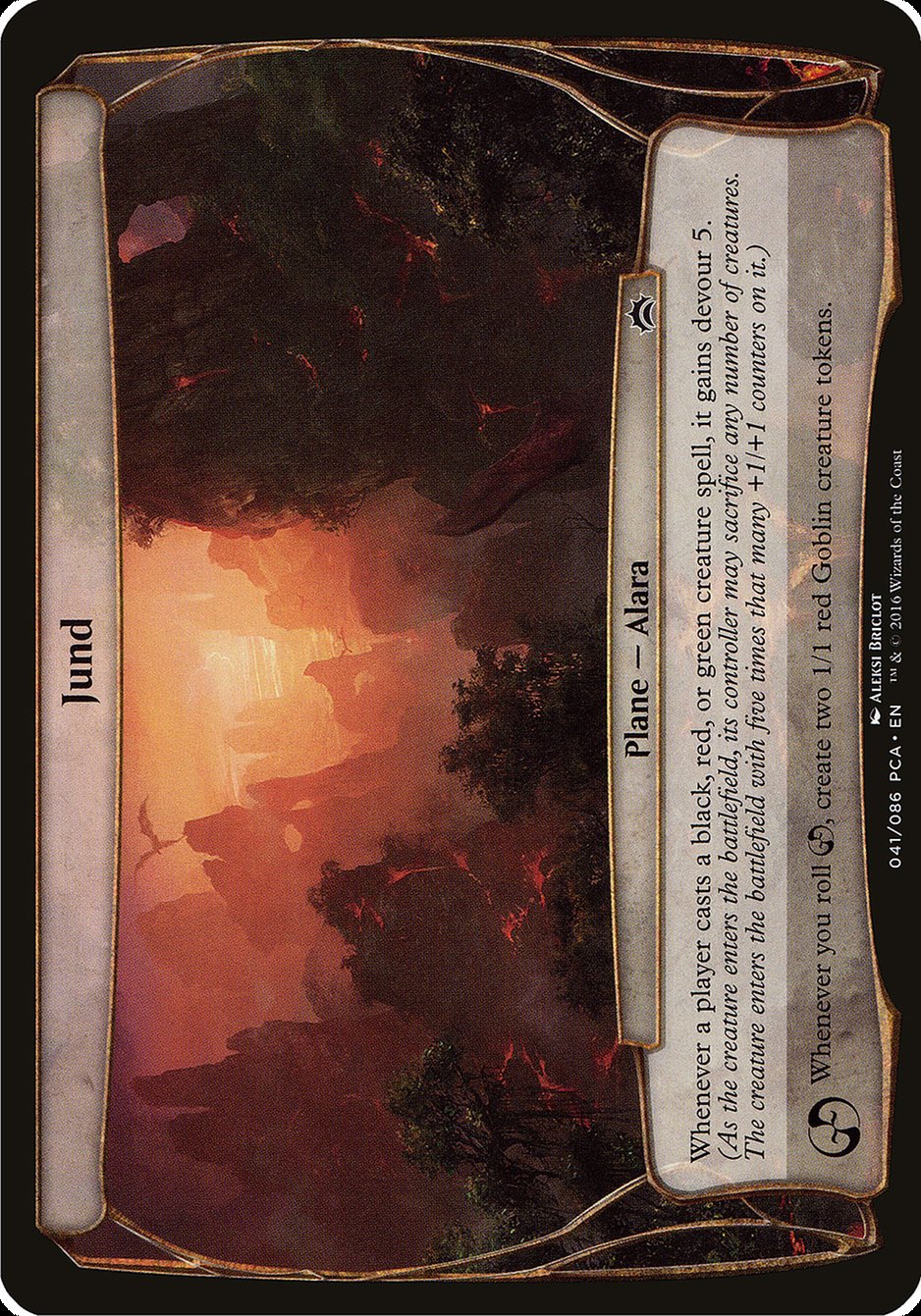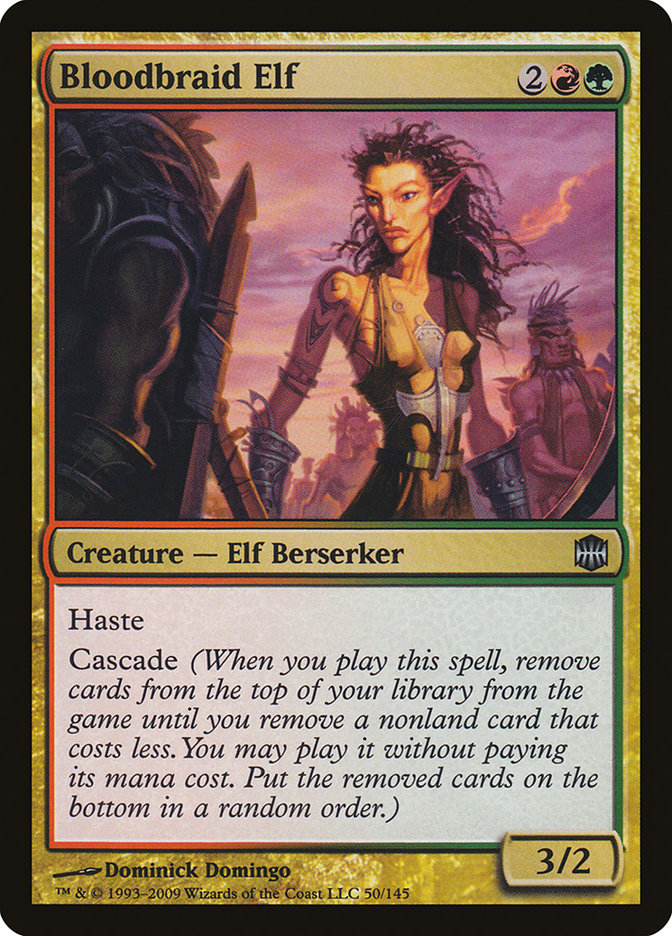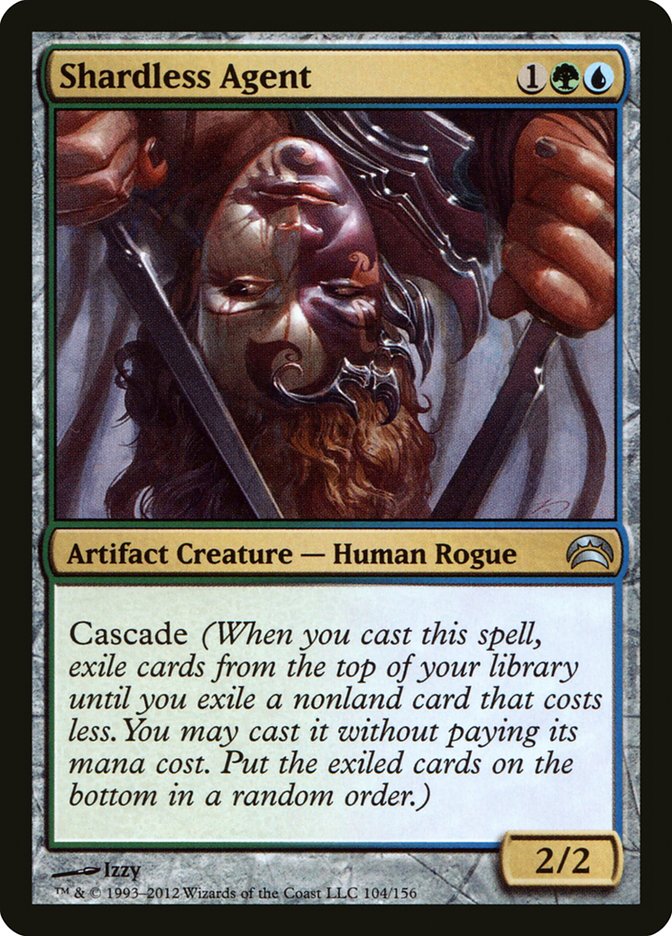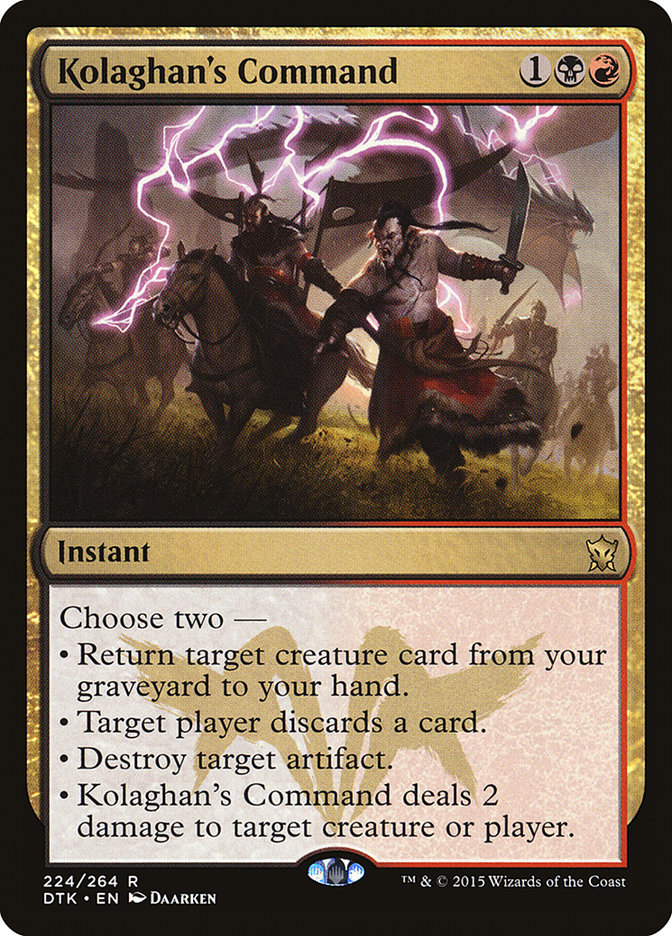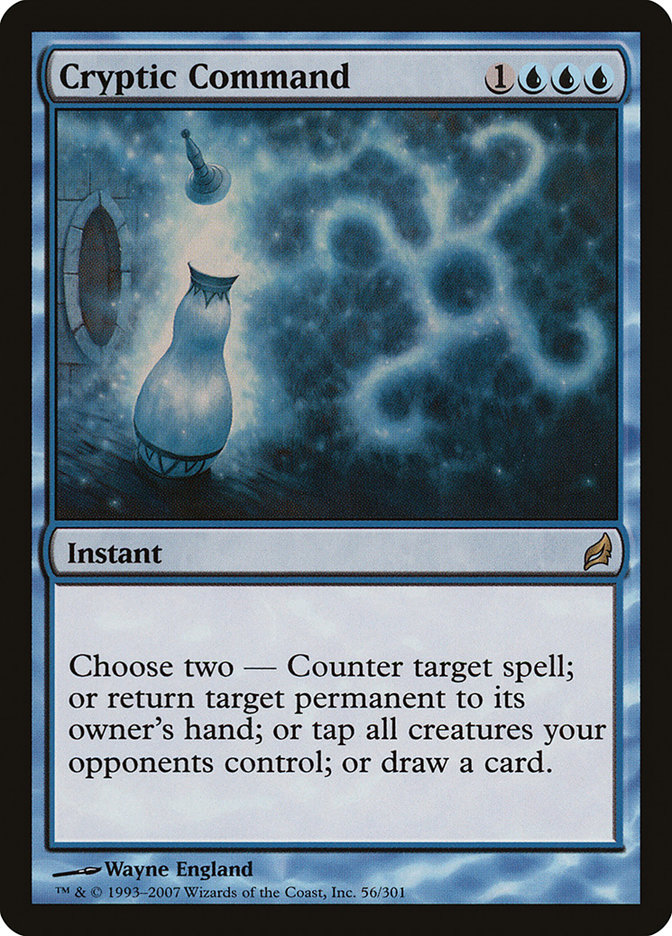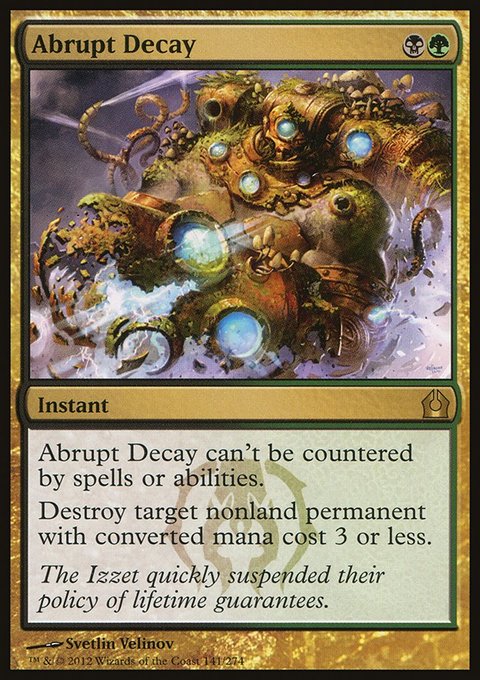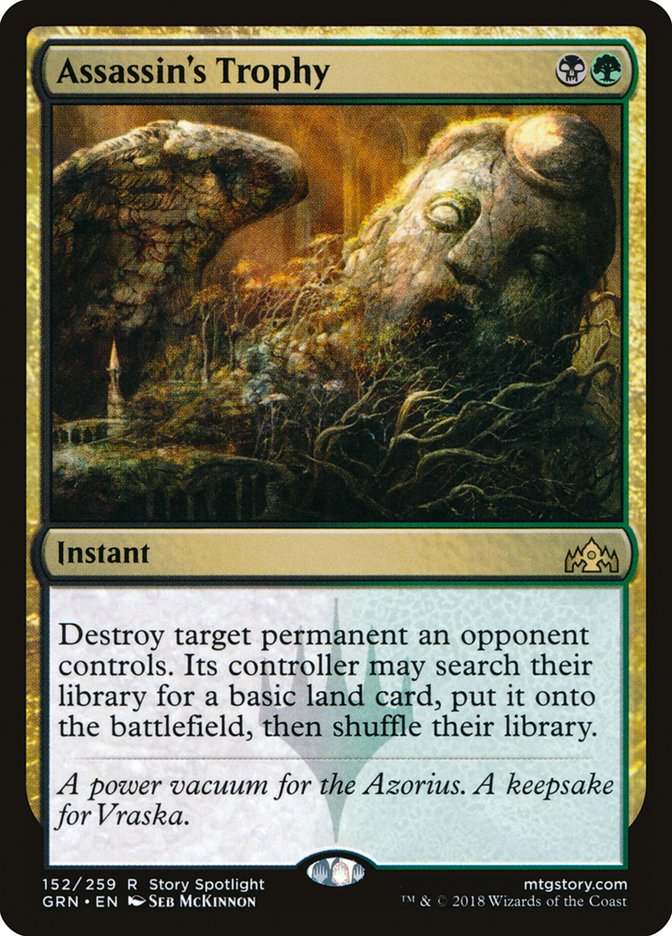Jund MTG Card
| Card sets | Released in 2 setsSee all |
| Rarity | Common |
| Type | Plane — Alara |
Text of card
Whenever a player casts a black, red, or green creature spell, it gains devour 5. (As the creature enters the battlefield, its controller may sacrifice any number of creatures. The creature enters the battlefield with five times that many +1/+1 counters on it.) Whenever you roll {Chaos}, put two 1/1 red Goblin creature tokens onto the battlefield.
Cards like Jund
The allure of Jund-colored cards in MTG is rooted in their potent combination of aggression, disruption, and value. This blend is vividly portrayed in cards like Bloodbraid Elf, a hallmark of Jund strategies. The card cascades into another, potentially accelerating a player’s board state significantly. However, it contrasts with cards like Shardless Agent, which, while also a cascade card, operates in a different spectrum of colors, trades power for a lower casting cost and tends to lead into control strategies versus the aggression of Jund.
Another Jund staple is Kolaghan’s Command, offering a swiss-army-knife approach – versatile and impactful in various scenarios, similar to Cryptic Command in blue-focused decks. Though Cryptic Command’s flexibility is remarkable, it lacks the direct damage and graveyard recursion that are characteristic of Jund’s synergy. Moreover, Abrupt Decay is another Jund gem, uncounterable and capable of destroying a variety of threats, whereas Assassin’s Trophy extends this removal capability across all permanent types, albeit with the drawback of giving the opponent a land. Yet, both embody the principles of disruption and efficiency prized in Jund constructs.
Analyzing the intricacies of these cards reveals why Jund-hued spells stand as a symbol of diversity and power in MTG, adeptly marrying the philosophies of the three colors to offer unique and formidable strategies for any player looking to command the battlefield.
Card Pros
Delving into the strengths of Jund cards in the vibrant world of MTG is akin to discovering a treasure trove of strategic depth. Players who build around the Jund archetype are often rewarded with a powerful mix of aggression, disruption, and resilience. Picking out a few key advantages, here’s what Jund brings to the table:
Card Advantage: Jund is notorious for its ability to maintain a superior hand size, often overpowering opponents with a relentless stream of threats and answers. Cards that simultaneously remove an opponent’s resources while drawing you into more action are a staple in this tri-color combination, keeping you one step ahead in the attrition war.
Resource Acceleration: Many Jund cards focus on ramping up your mana base, allowing for quicker deployment of high-impact cards. This color trio excels in converting early game resources into powerful mid-game positions, transitioning seamlessly from acceleration to domination, all while maintaining the pressure on opponents with threats that demand immediate answers.
Instant Speed: The flexibility of instant speed interactions is another Jund hallmark, providing the leverage to disrupt opponents at the most opportune moments. Whether it’s removing a key threat during the combat phase or countering a game-changing spell, the ability to act on your opponent’s turn is a powerful tool in any Jund player’s arsenal, often tipping the scales in their favor.
Card Cons
Discard Requirement: Often, Jund decks necessitate discarding cards as a part of their strategy or cost, which can disadvantageously deplete your hand, particularly if you’re contending with an empty or nearly empty grip on the game.
Specific Mana Cost: Jund cards typically demand a precise combination of mana colors, green, red, and black, which makes building your mana base challenging and can potentially lead to being mana-locked if not managed properly.
Comparatively High Mana Cost: Jund archetypes are known for their powerful effects but also for their expensive casting costs. This can be burdensome when attempting to play multiple spells or maintain board presence against decks that operate more efficiently at lower mana curves.
Reasons to Include in Your Collection
Versatility: Jund cards are known for their adaptability, easily fitting into decks that thrive on interaction and resource advantage. Their flexibility in responding to a variety of in-game scenarios makes them a robust choice for any collection.
Combo Potential: With Jund, the synergy between cards can lead to devastating combinations, exploiting the strengths of sacrificing creatures, leveraging graveyard mechanics, and utilizing direct damage to control the board state.
Meta-Relevance: Jund decks consistently perform in various metas, combating against a range of playing styles. The balance of aggressive creatures, removal, and disruption they offer can pivot key matches in your favor.
How to beat Jund Cards
Jund decks, known for their resilience and adaptability in MTG, present a considerable challenge. These decks bring a powerful mix of aggressive creatures, versatile removal, and potent hand disruption to the table. Taking them down requires a well-thought-out strategy. To effectively confront Jund, players should focus on maintaining card advantage, prioritizing efficient removal spells for their high-value threats, and employing graveyard hate to mitigate the impact of their recursive elements.
One effective approach is to outrun their disruption through playing low-cost spells that can impact the board early on. This forces Jund players to be more reactive, hindering their ability to set up their strategy. Moreover, including cards with exile effects in your arsenal can be invaluable as they offer a way to permanently deal with Jund’s creatures and key components that thrive on graveyard interactions.
Finally, it is critical to be vigilant about land destruction capabilities as part of a Jund tactics, which can be circumvented by optimizing your land base and including card draws to consistently make land drops. By anticipating the common plays from Jund and strategically planning your own, you can steer the game toward your triumph over this formidable archetype.
Where to buy
If you're looking to purchase Jund MTG card by a specific set like Planechase Anthology Planes and March of the Machine Commander, there are several reliable options to consider. One of the primary sources is your local game store, where you can often find booster packs, individual cards, and preconstructed decks from current and some past sets. They often offer the added benefit of a community where you can trade with other players.
For a broader inventory, particularly of older sets, online marketplaces like TCGPlayer, Card Kingdom and Card Market offer extensive selections and allow you to search for cards from specific sets. Larger e-commerce platforms like eBay and Amazon also have listings from various sellers, which can be a good place to look for sealed product and rare finds.
Additionally, Magic’s official site often has a store locator and retailer lists for finding Wizards of the Coast licensed products. Remember to check for authenticity and the condition of the cards when purchasing, especially from individual sellers on larger marketplaces.
Below is a list of some store websites where you can buy the Jund and other MTG cards:
 BUY NOW
BUY NOW BurnMana is an official partner of TCGPlayer
- eBay
- Card Kingdom
- Card Market
- Star City Games
- CoolStuffInc
- MTG Mint Card
- Hareruya
- Troll and Toad
- ABU Games
- Card Hoarder Magic Online
- MTGO Traders Magic Online
See MTG Products
Printings
The Jund Magic the Gathering card was released in 2 different sets between 2018-12-25 and 2023-04-21. Illustrated by Aleksi Briclot.
| # | Released | Name | Code | Symbol | Number | Frame | Layout | Border | Artist |
|---|---|---|---|---|---|---|---|---|---|
| 1 | 2018-12-25 | Planechase Anthology Planes | OPCA | 41 | 2015 | Planar | Black | Aleksi Briclot | |
| 2 | 2023-04-21 | March of the Machine Commander | MOC | 148 | 2015 | Planar | Black | Aleksi Briclot |
Rules and information
The reference guide for Magic: The Gathering Jund card rulings provides official rulings, any errata issued, as well as a record of all the functional modifications that have occurred.
| Date | Text |
|---|---|
| 2012-06-01 | Casting a multicolor spell will cause the first ability to trigger as long as that spell is black, red, or green. It can be other colors as well. |
| 2012-06-01 | If the creature spell already has devour, you may sacrifice creatures using either ability. Each creature you sacrifice counts for only one devour ability. Under most circumstances, you'll pick the devour ability that gives the greatest number of +1/+1 counters. |
